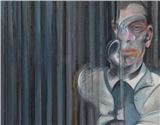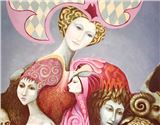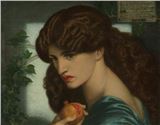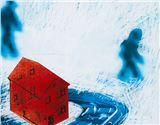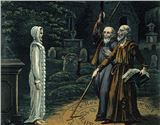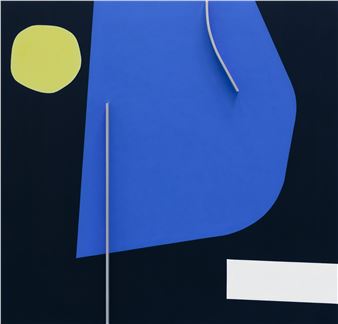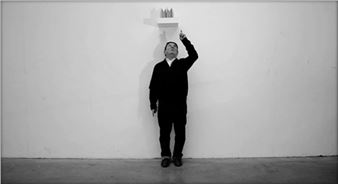Rebel Presses. Resistance in Print during the Second World War
This fascinating display shines a light on the courageous groups who created and distributed newspapers, pamphlets and booklets during World War Two. By exhibiting the material they produced, it shows the important contributions they made to countering oppression.
By 1942, much of Europe had been occupied by German forces. In response, a flood of resistance publications emerged, from flyers handwritten by individuals to sophisticated newspaper networks with large circulations. They were intended to counter Nazi propaganda, encourage resistance and boost morale. By the autumn of 1943, it is estimated that at least 60 clandestine newspapers were regularly being printed in occupied Europe, producing 500,000 copies each month.
This display examines how and why oppressed people printed and distributed illegal pamphlets, booklets and newspapers, despite the fear of imprisonment and execution. Such publications served to boost morale and create a sense of shared resistance, often featuring biting satire and humour intended to subvert Nazi authority. But they also provided information which could be used to actively undermine the occupying forces, like outlining sabotage techniques or listing the names and addresses of local collaborators.
Booklets, pamphlets and newspapers were hand or typewritten and reproduced in secret using stolen ink and paper. Some were clandestinely published on professional presses, but many were printed on cheap and portable mimeograph (or duplicating) machines. Publications were distributed via bicycle, smuggled in prams and scattered in public places in an effort to reach as wide a readership as possible. Some copies were sent directly to the occupying forces as an act of provocation: the first issue of La Libre Belgique (Free Belgium) was posted in a perfumed envelope to the German military governor of Belgium. Printing and distributing these publications was highly dangerous: in Denmark in October 1942, the death penalty was introduced simply for reading a clandestine newspaper.
Rebel Presses focuses particularly on examples of cultural resistance by communities of poets, writers and artists, linked to French imprints like La Main à Plume and Les Éditions de Minuit. It also features artwork by anti-Nazi activist John Heartfield (1891-1968), Polish exile Józef Sękalski (1904–1972) and Fernand Léger (1881-1955). We hope that – on the 80th anniversary of the end of the Second World War – this display sheds a light on some of the courageous resistance activity undertaken across occupied Europe at the time.
A central focus of this display is the publication of Paul Éluard's poem Liberté (Liberty), which became a symbol of wartime resistance. It was first published in 1942 and distributed on the streets of occupied Paris but found a wider audience through translation and reprinting throughout Europe and the Americas. Enormously popular, the poem was broadcast by the BBC, set to music by Francis Poulenc and thousands of copies were airdropped over occupied Europe by the RAF.

Recommended for you
This fascinating display shines a light on the courageous groups who created and distributed newspapers, pamphlets and booklets during World War Two. By exhibiting the material they produced, it shows the important contributions they made to countering oppression.
By 1942, much of Europe had been occupied by German forces. In response, a flood of resistance publications emerged, from flyers handwritten by individuals to sophisticated newspaper networks with large circulations. They were intended to counter Nazi propaganda, encourage resistance and boost morale. By the autumn of 1943, it is estimated that at least 60 clandestine newspapers were regularly being printed in occupied Europe, producing 500,000 copies each month.
This display examines how and why oppressed people printed and distributed illegal pamphlets, booklets and newspapers, despite the fear of imprisonment and execution. Such publications served to boost morale and create a sense of shared resistance, often featuring biting satire and humour intended to subvert Nazi authority. But they also provided information which could be used to actively undermine the occupying forces, like outlining sabotage techniques or listing the names and addresses of local collaborators.
Booklets, pamphlets and newspapers were hand or typewritten and reproduced in secret using stolen ink and paper. Some were clandestinely published on professional presses, but many were printed on cheap and portable mimeograph (or duplicating) machines. Publications were distributed via bicycle, smuggled in prams and scattered in public places in an effort to reach as wide a readership as possible. Some copies were sent directly to the occupying forces as an act of provocation: the first issue of La Libre Belgique (Free Belgium) was posted in a perfumed envelope to the German military governor of Belgium. Printing and distributing these publications was highly dangerous: in Denmark in October 1942, the death penalty was introduced simply for reading a clandestine newspaper.
Rebel Presses focuses particularly on examples of cultural resistance by communities of poets, writers and artists, linked to French imprints like La Main à Plume and Les Éditions de Minuit. It also features artwork by anti-Nazi activist John Heartfield (1891-1968), Polish exile Józef Sękalski (1904–1972) and Fernand Léger (1881-1955). We hope that – on the 80th anniversary of the end of the Second World War – this display sheds a light on some of the courageous resistance activity undertaken across occupied Europe at the time.
A central focus of this display is the publication of Paul Éluard's poem Liberté (Liberty), which became a symbol of wartime resistance. It was first published in 1942 and distributed on the streets of occupied Paris but found a wider audience through translation and reprinting throughout Europe and the Americas. Enormously popular, the poem was broadcast by the BBC, set to music by Francis Poulenc and thousands of copies were airdropped over occupied Europe by the RAF.
Artists on show
Contact details


 ARTISTS
ARTISTS
